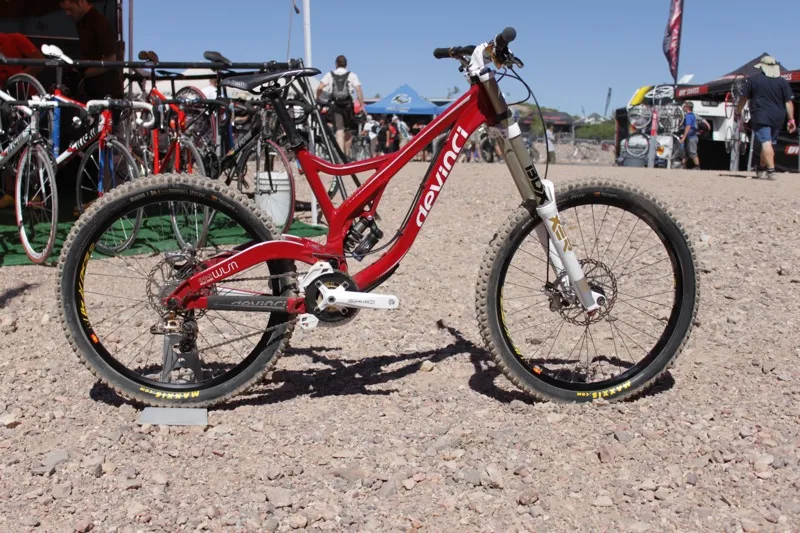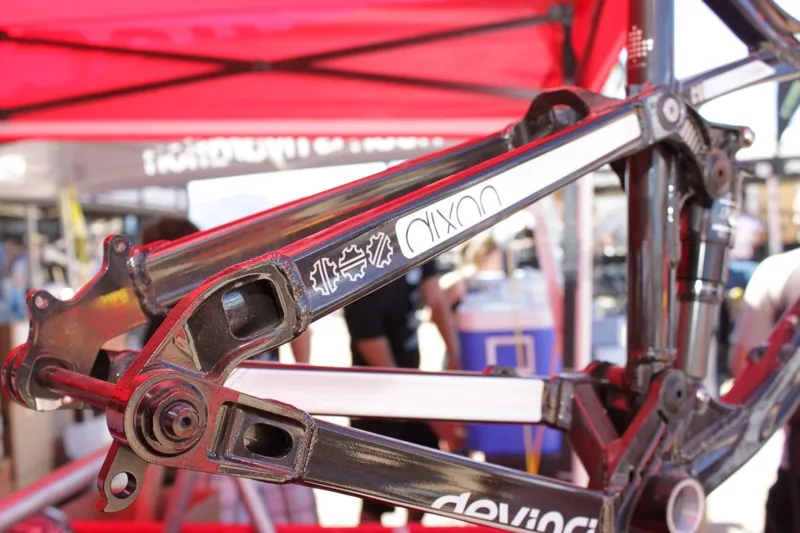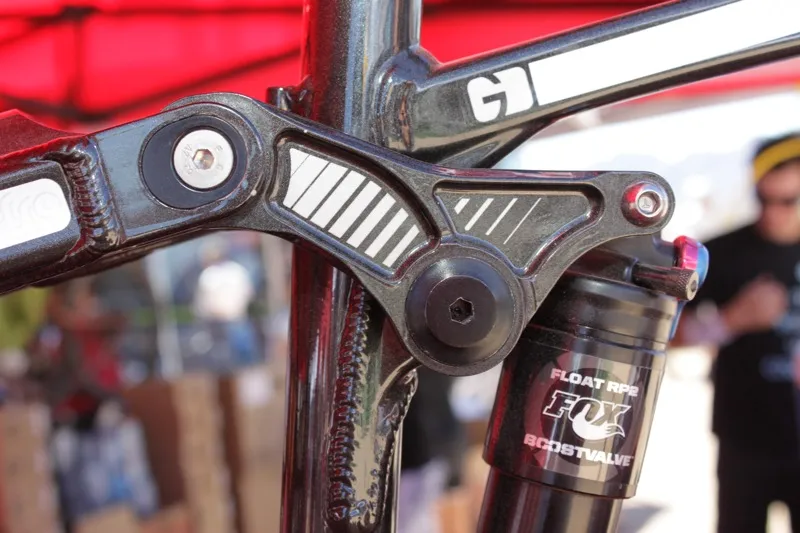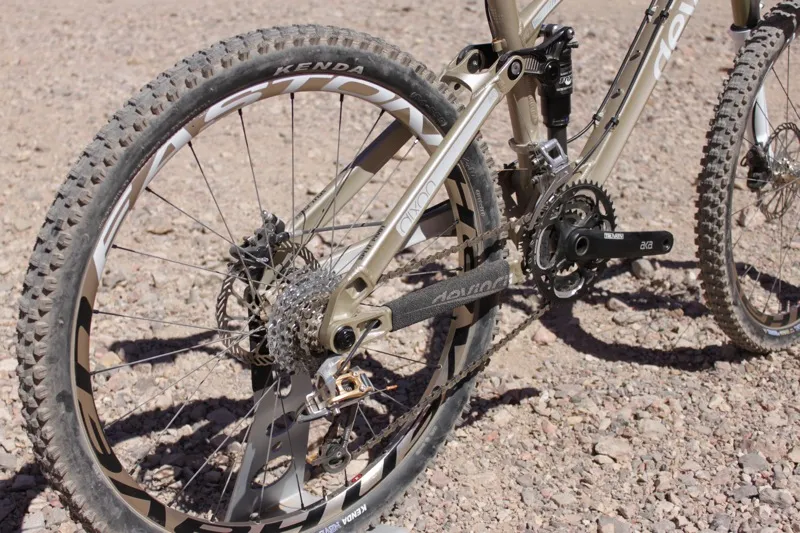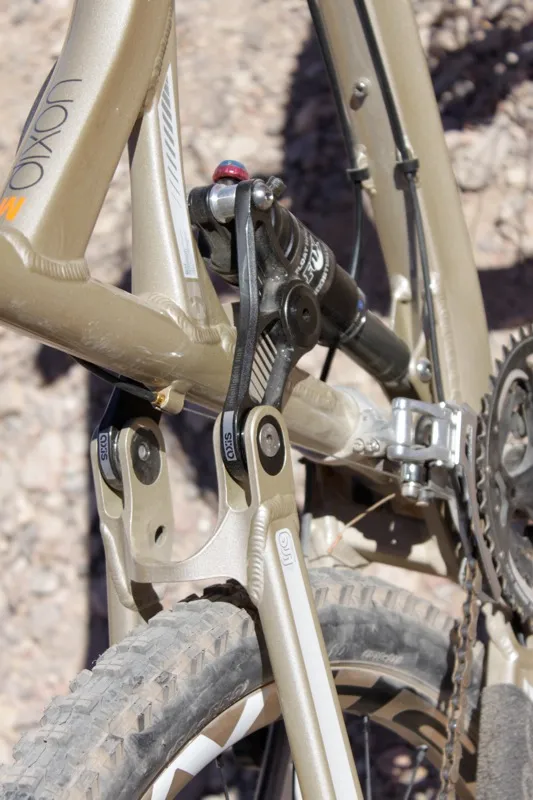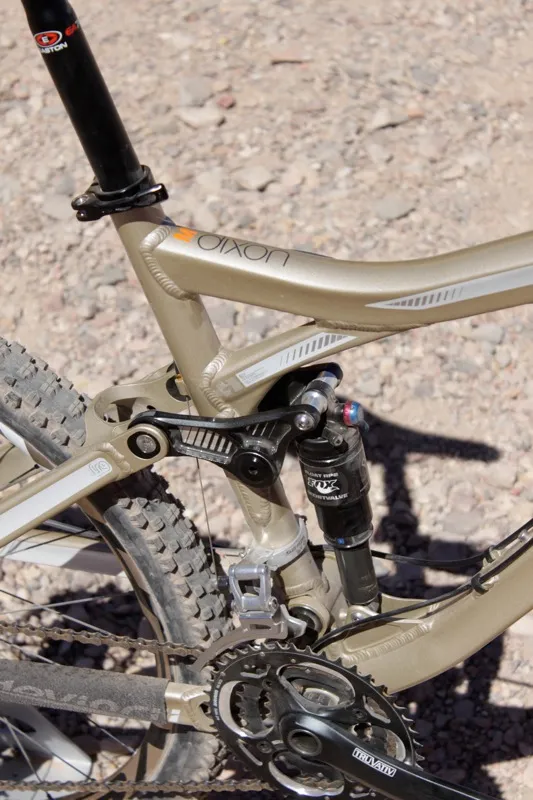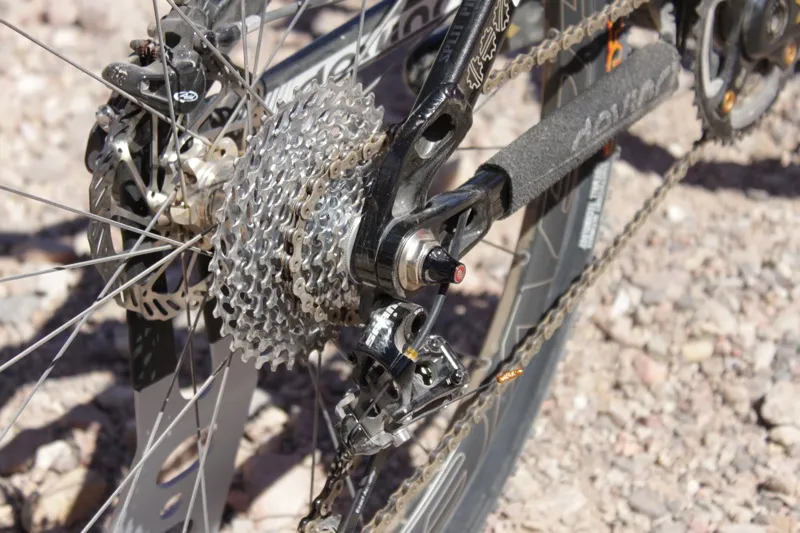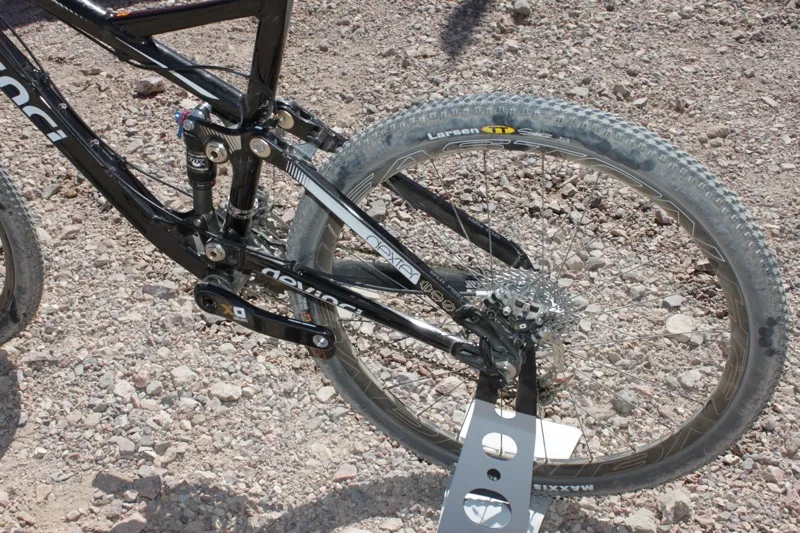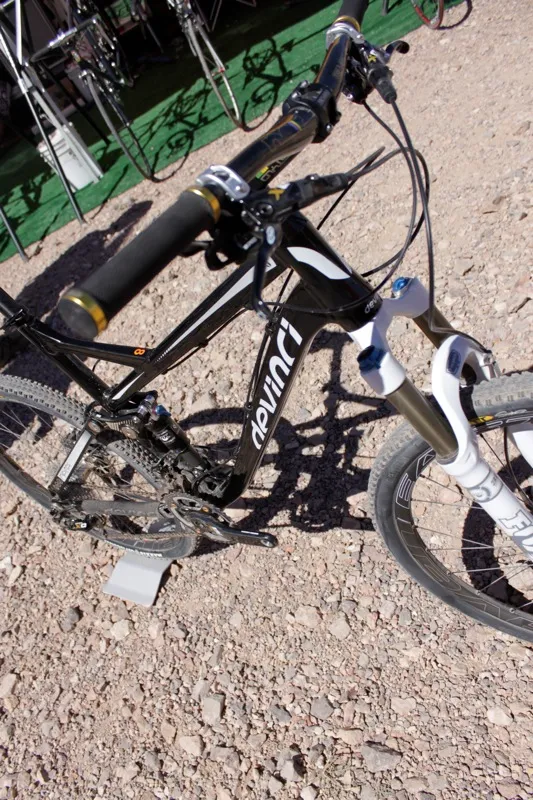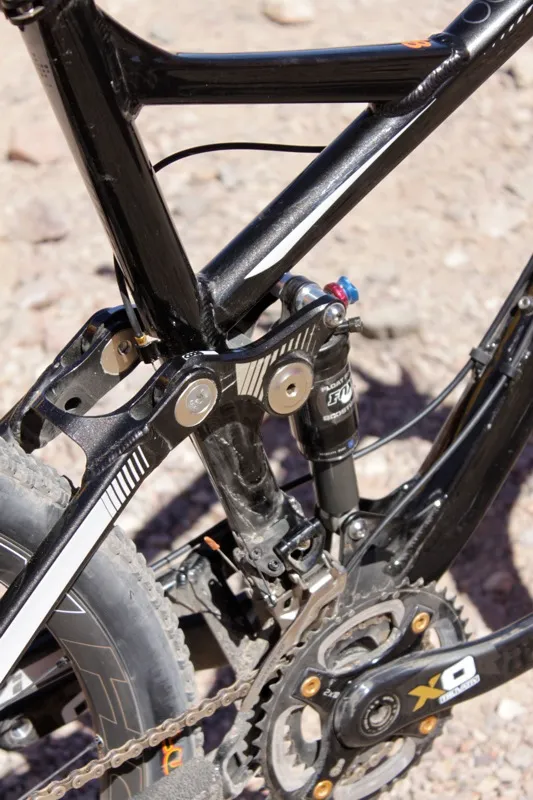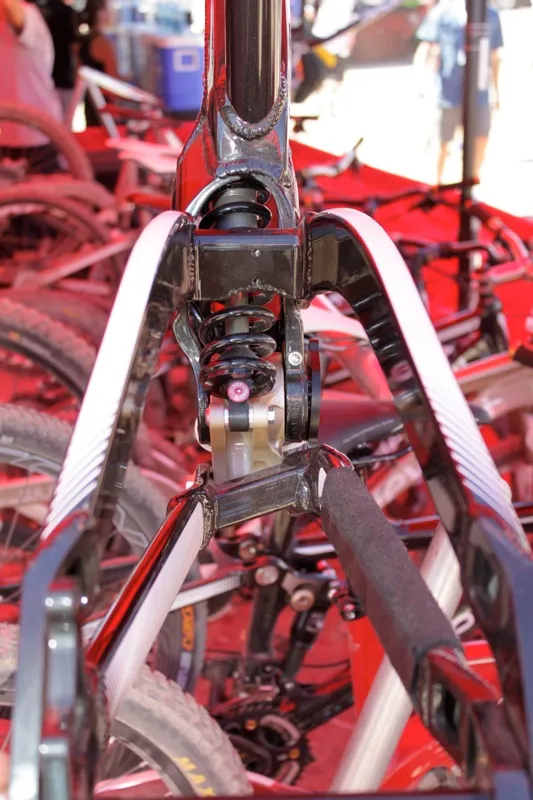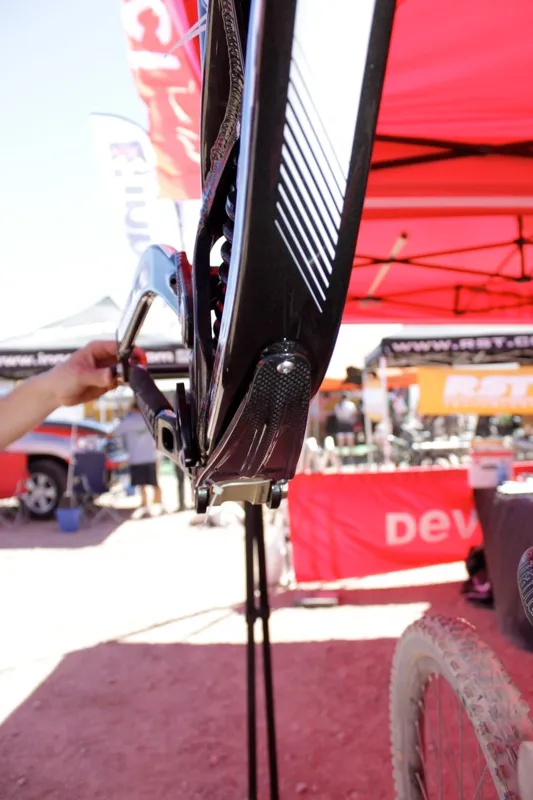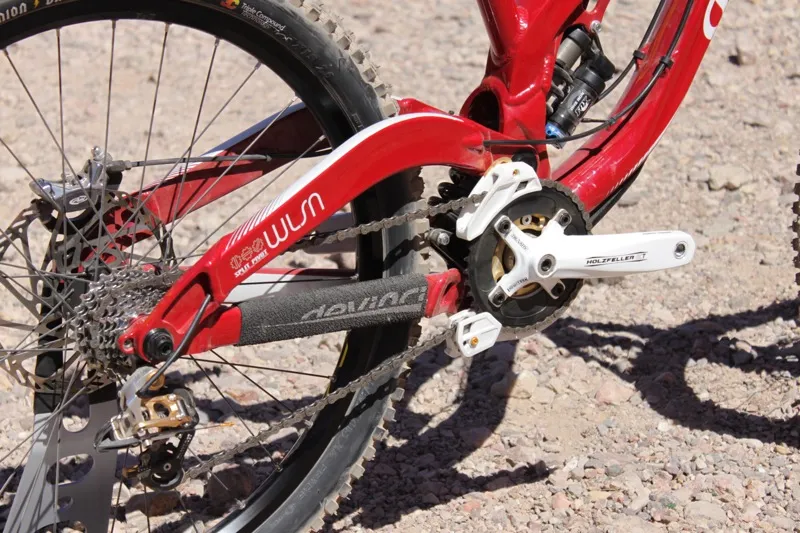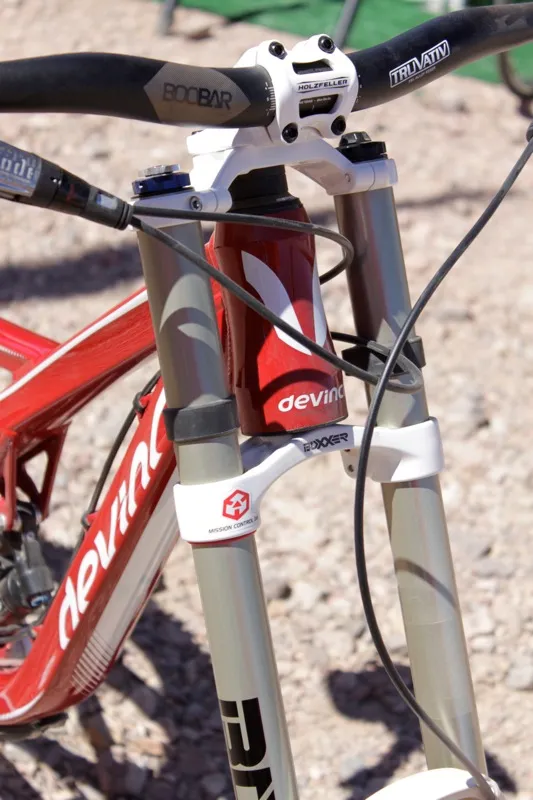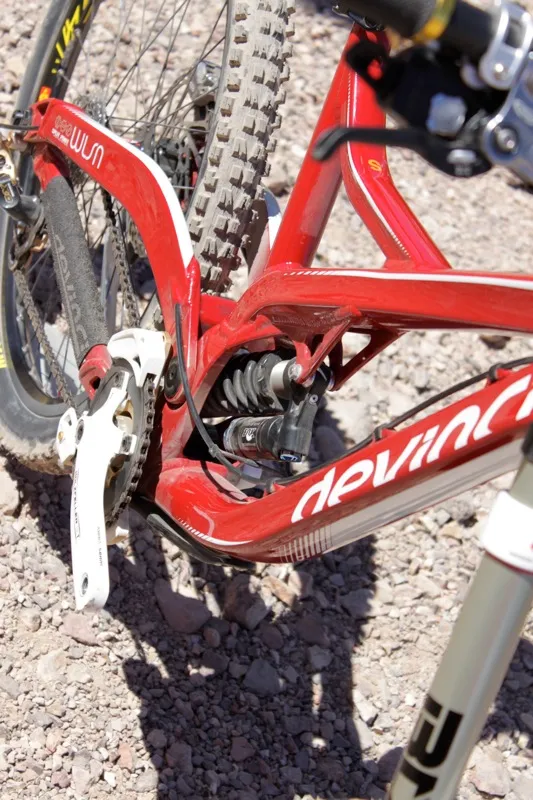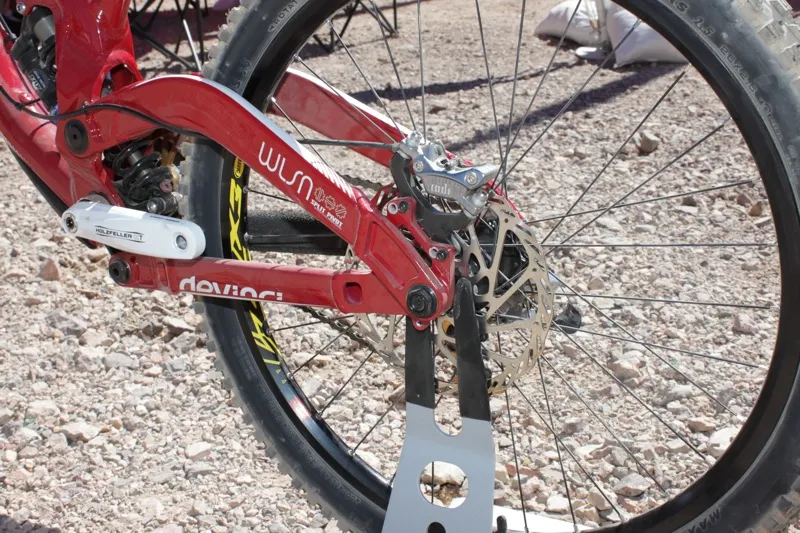Devinci Cycles brought three new mountain bikes to Boulder City, Nevada for Interbike’s 2010 dirt demo that have been in the works since 2006. It was an unusually long development, but it leaves the company with some sharp looking and slick riding new machines for the coming year.
The three bikes – Dexter, a 110mm cross-country endurance racer; Dixon, a 145mm trail bike and Wilson, a full-blown World Cup downhiller with 216mm of travel – all use renowned designer Dave Weagle's (dw-link, Evil, e*thirteen) Split Pivot system.
Weagle first worked with Devinci when they produced bikes for him under the Evil name in the early 2000s, and was impressed by their rigorous testing and manufacturing prowess. (It should be noted that all of Devinci’s bikes come with lifetime warranties, even the Wilson downhill race rig.)
They've been developing the Split Pivot design together since late 2006, with the first prototypes rolling out of Devinci's Chicoutimi, Quebec factory in early 2007. However, it wasn't until May this year that Weagle was awarded the patent for the design and production could go ahead.
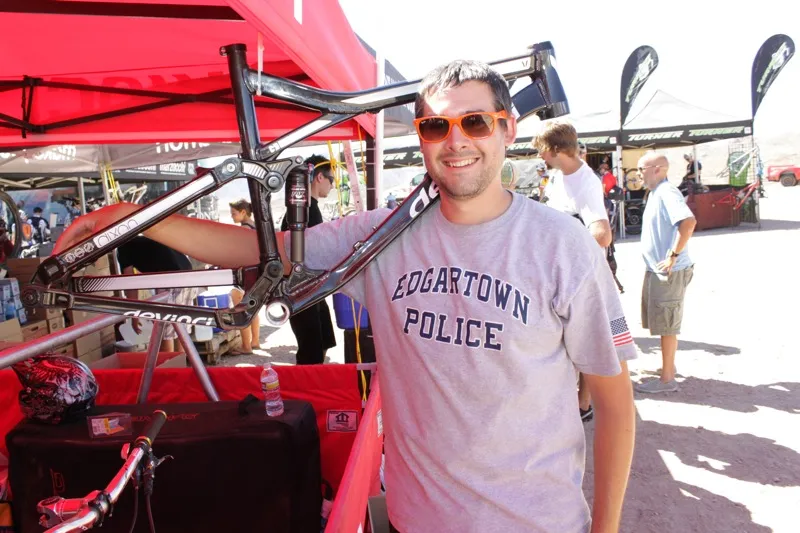
Split Pivot designer and patent owner Dave Weagle with a Dixon frame
Dexter: 110mm-travel cross-country trail bike
Weagle and Devinci reps were careful not to call the Dexter a race rocket, but the build of the bikes for the dirt demo was a bit of a contradiction – they rolled on Easton’s new Haven carbon wheels shod with narrow Maxxis tyres, and weighed in at just over 22lb (size medium).
“I wouldn’t say they’re as racy as they could be,” said Weagle. “They’re more geared towards the guys who appreciate that cross-country kind of ride and feel, but are looking for a little more travel. The point was to maximise compliance and efficiency, rather than just make it a rocket.”
Weagle said the Dexter was more of a challenge to design that the other two bikes, because given the choice he’d be on a bike with more travel. “We really want this bike to cater to the needs of a racer,” he said. “We wanted to put our best foot forward.”
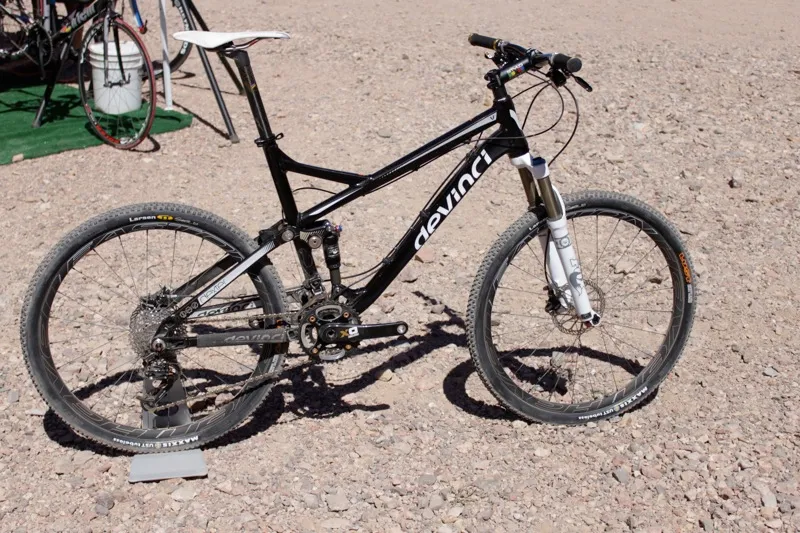
Devinci's Dexter cross-country race bike
The Dexter is best paired with a 100-120mm fork and comes as a complete bike with a 110mm fork. It has a slacker head angle (69.2° in the slacker of its two adjustable geometry settings) and lower (BB30) bottom bracket than many bikes in its travel category, but Weagle says this is compensated for by the suspension’s kinematic characteristics; the Dexter's geometry doesn’t radically change through the range of travel.
The Fox RP23 rear shock uses only 150psi in the Boost Valve. “That’s ridiculously low, which ultimately makes the bike more compliant,” said Weagle. “Most bikes in this class will be running 250psi; we started with a higher pressure and just kept going lower and lower because we could get away with it. It’s awesome, guys aren’t really using the ProPedal lever; to run a 150 shock on a bike like that is pretty unheard of.”
Dixon: 145mm of fun
David Régnier-Bourque, Devinci’s marketing co-ordinator, says the Dixon is his favourite of the new bikes and the one he has spent the most time on. It's squarely aimed at the market dominated by the Giant Trance and Reign, Specialized Stumpjumper and Trek Remedy.
Devinci’s demo Dixons weighed just over 26lb (size medium) with a reasonably economical build and a focus on big bump performance. “These are really playful bikes,” said Weagle. Features include a 142x12mm through-axle and tapered head tube. The bike is designed to take a 150mm-travel fork, with a 2.25in-stroke Fox RP23 shock providing 145mm of travel at the rear.
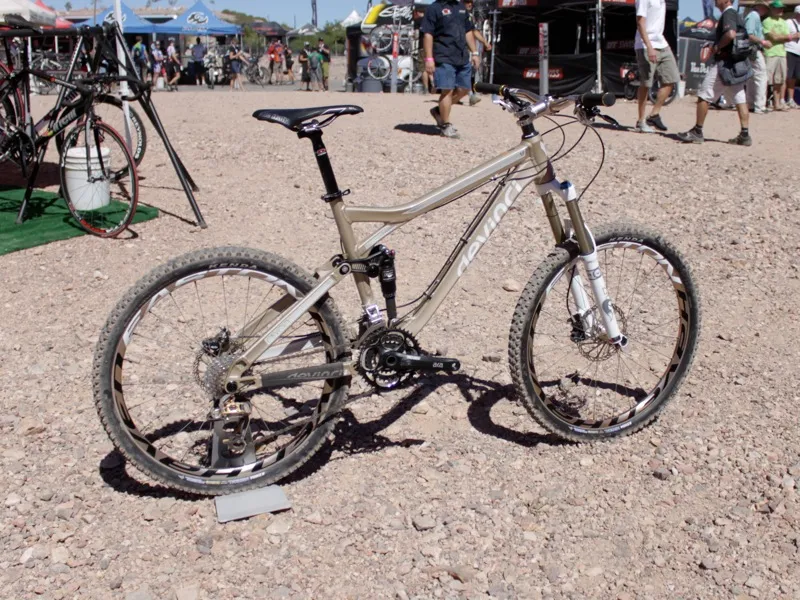
Devinci's complete Dixon SL 145mm-travel trail bike
We went for a short jaunt on the Dixon and can’t wait to ride it more. It likes to be pedaled yet has a willingness to descend. The bikes geometry is adjustable by a little less than a degree in the head angle and a few millimeters in the bottom bracket height. We rode it with the steeper 67° head angle and 347mm bottom bracket height and it handled fine on the bumpy but rather tame trails we rode in Bootleg Canyon.
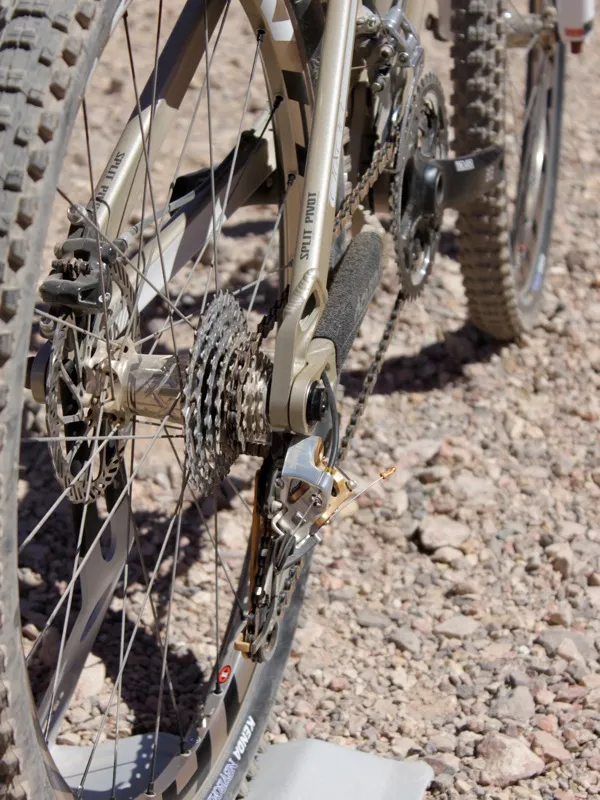
A better look at the actual Split Pivot; the Dixon uses a 142x12mm thru-axle
Like many of Weagle's bikes, it has a firm, efficient feel when pedalled. Yet when plowing over rough ground the suspension stays very active under braking. Like the designer says, it has a lively, playful ride.
Wilson: A downhill racer built for the long haul
Devinci engineers and Weagle were riding Wilson prototypes as early as May 2009. “It’s pretty different from the other Split Pivot bikes we’ve done,” said Weagle. “But then downhill bikes have different requirements.”

Wilson the World Cup racer
One of the main goals was to keep the centre of gravity low. Other important features include the long 3.5in shock stroke and the leverage ratio, which is progressive throughout the entire stroke but ramps up slightly at the end to give the 216mm-travel bike a bottomless feel.
The shock operates a pull-link, which is a massive CNC-machined piece that pivots around the bottom bracket shell. The chainstays pivot off of this link, mounting below and behind the BB. When the bike hits a bump, the chainstays pull backwards and activate the shock. At the rear end, the concentric Split Pivot is said to isolate the suspension from braking forces.
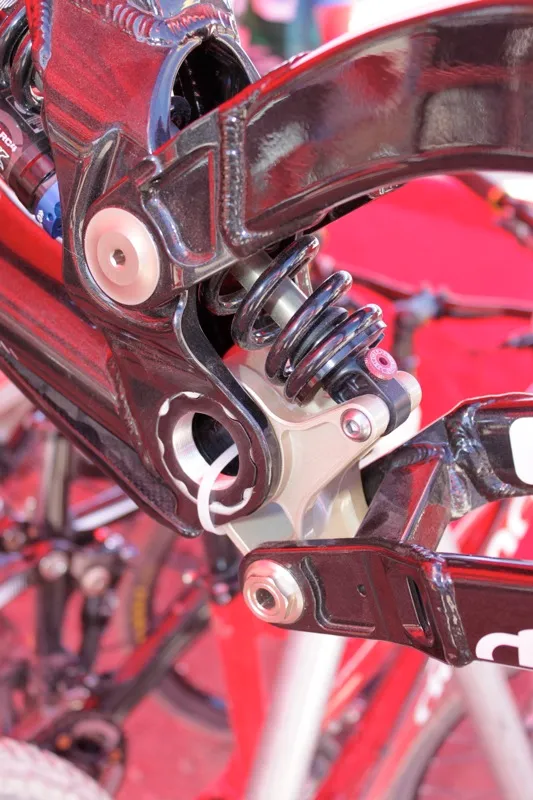
The Wilson's pull-link design
The frame allows for head tube and bottom bracket height adjustments, and the tapered head tube accepts CaneCreek’s new AngleSet should more adjustment be required. A medium Wilson is said to weigh 39lb.
Building the new bikes
Dixon, Dexter and Wilson are all made from a 6066-T6 alloy that's new for Devinci. The company previously used 6061, but the better impact resistance of 6066 made the change compelling. The tubes are triple butted and hydroformed.
Devinci are also using mould type jigs when welding the new frames that are more precise than older clamp style jigs. Each frame size gets its own mould, in which tubes are inserted and tacked before heat treatment. A CNC machined finish is given to all surfaces that need to have precise tolerances, including bottom bracket shells, head tubes and suspension bearing surfaces.

